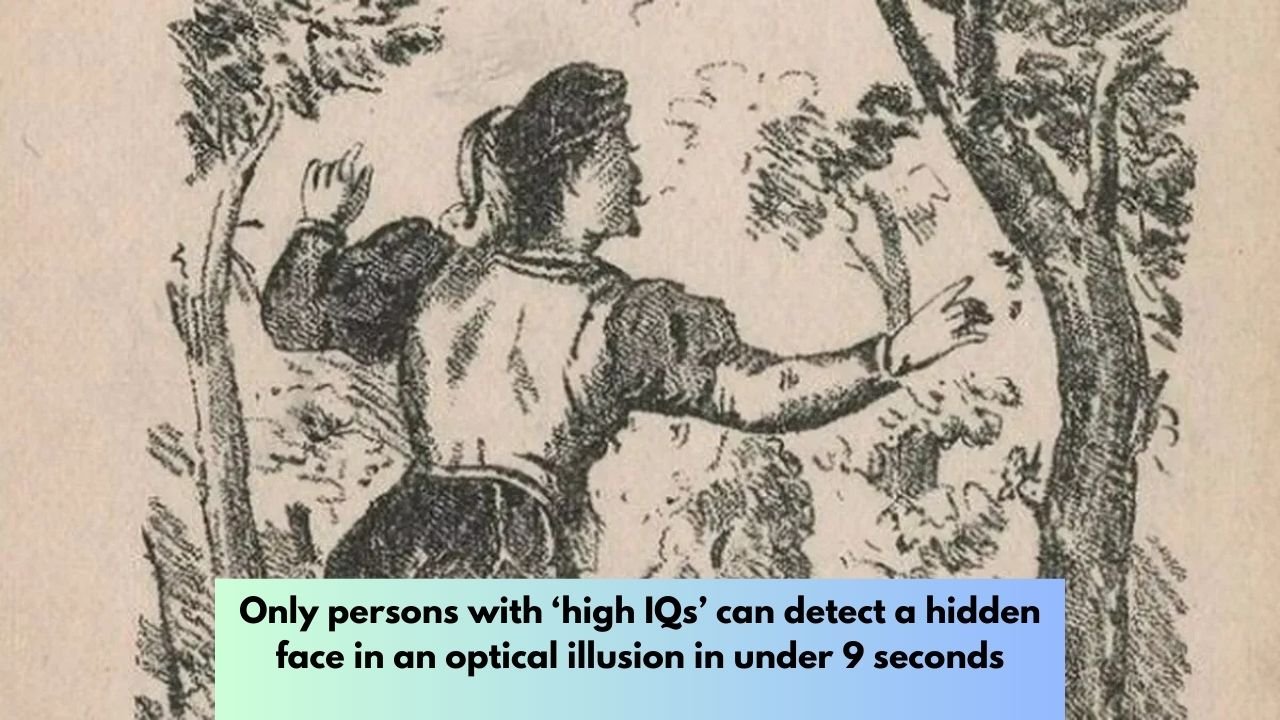Introduction: In the ever-evolving landscape of online challenges and optical illusion a particularly enticing claim has emerged – the assertion that only individuals with ‘high IQs’ can unveil a concealed face within a visual puzzle in a mere 9 seconds.
This declaration, often circulated as a form of social media engagement or clickbait, invites participants to test their cognitive agility and visual acumen. This exploration aims to delve into the world of optical illusions, scrutinize the alleged connection between intelligence and quick detection, and unravel the mysteries surrounding the ‘Hidden Face’ challenge.
I. The Enigmatic Appeal of Optical Illusions Optical illusions have intrigued and captivated individuals for centuries, presenting illusions that defy our expectations and challenge the way we perceive the visual world. From classic works of art to modern digital puzzles, optical illusions play on the intricacies of human vision, pushing us to question reality and revel in the delightful confusion they create.
The allure lies in the cognitive dissonance experienced when what we see clashes with what we know to be true, prompting a deeper exploration of our perceptual capabilities.
II. The ‘Hidden Face’ Challenge Unveiled The specific challenge of uncovering a hidden face within a time limit, often set at 9 seconds, has gained traction across various online platforms. Participants engage in visual puzzles where an obscured face is concealed within intricate patterns or designs. The claim suggests that only those with ‘high IQs’ possess the cognitive prowess to swiftly discern the hidden face, adding an element of competition and curiosity to the challenge.
III. Visual Perception: A Complex Interplay To understand the dynamics of optical illusions and the ‘Hidden Face’ challenge, a dive into the complexities of visual perception and the interplay between the eyes and the brain is necessary. Vision is an intricate process involving the reception of external stimuli by the eyes and the subsequent interpretation of that information by the brain. Optical illusions exploit the brain’s reliance on shortcuts and assumptions, leading to perceptual distortions that spark fascination and investigation.
IV. Intelligence and Visual Puzzle Solving The claim that the ability to swiftly uncover a hidden face correlates with high intelligence invites scrutiny into the relationship between cognitive abilities and visual puzzle-solving skills. While some studies suggest a connection between certain cognitive tasks, including pattern recognition, and intelligence, it is crucial to acknowledge the multifaceted nature of intelligence. Intelligence encompasses a spectrum of cognitive functions, and a single visual challenge cannot serve as a comprehensive indicator of an individual’s overall intellectual capacity.
V. Critiquing the Claim: A Nuanced Perspective A critical examination of the claim that only persons with ‘high IQs’ can reveal the hidden face in 9 seconds prompts a nuanced perspective. Intelligence is a multifaceted construct, and its measurement extends beyond the realm of visual puzzle-solving. While challenges such as the ‘Hidden Face’ may be entertaining and stimulating, their accuracy as a diagnostic tool for intelligence is questionable. Engaging with online challenges should be approached with a discerning mindset, recognizing their primary purpose may be entertainment rather than a precise assessment of cognitive abilities.
Only persons with ‘high IQs’ can detect a hidden face in an optical illusion in under 9 seconds[/caption]Only persons with ‘high IQs’ can detect a hidden face in an optical illusion in under 9 seconds
VI. The Online Challenge Phenomenon: Beyond Intelligence As we navigate the landscape of online challenges, including the ‘Hidden Face’ optical illusion, it is essential to acknowledge their widespread appeal. These challenges contribute to the communal nature of online platforms, fostering engagement, conversation, and shared experiences. While the purported link between intelligence and the ability to solve visual puzzles adds an intriguing layer to these challenges, participants should approach them with a balanced perspective, appreciating the entertainment value they offer.
Conclusion:
Unmasking the Complexity In conclusion, the exploration of the ‘Hidden Face’ optical illusion and its alleged connection to high IQ reveals the intricate interplay between visual perception, cognitive abilities, and the online challenge phenomenon. As we unravel the complexities of optical illusions, it becomes evident that intelligence is a nuanced and multifaceted trait. While online challenges add an element of fun and competition to the digital landscape, their ability to accurately gauge intelligence remains a subject of ongoing debate, reminding us of the multifaceted nature of the human mind and its perpetual fascination with perceptual mysteries.
